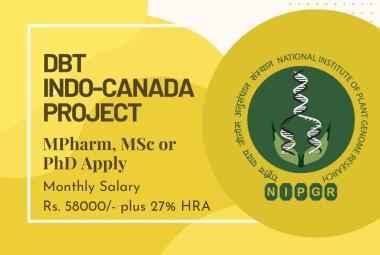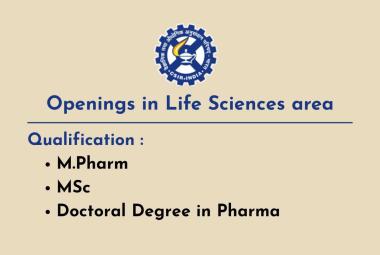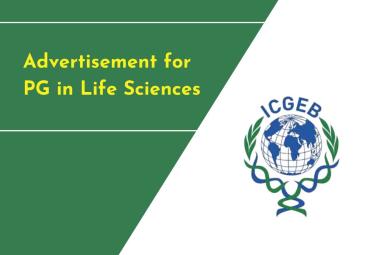 About Author:
About Author:
Rajesh Mujoriya
Sardar patel college of technology,
Balaghat, dis. Balaghat,
MP–481001,INDIA
Abstract
A neoplasm or tumor is a abnormal mass of tissue, the growth of which exceeds and is uncoordinated with that of the normal tissue and continues in the same manner after cessation of the stimuli which have initiated it.
A malignant tumor grows rapidly and continuously, and even when it has impoverished its host and source of nutrition, still retains the potentiality for further proliferation. Besides, malignanat tumors invade and destroys neighbouring tissues and possess no effective capsule, a malignant tumors readily ulcerate and tend sooner or later dessiminate and form metastases.
[adsense:336x280:8701650588]
Reference Id: PHARMATUTOR-ART-1151
1) Introduction
1.1) About Cancer:
Neoplasm is derived from Greek word neos means new and plasma means formation. Cancer is a genetic disease that can occur in all types of body tissues. It is found in many forms, including solid tissue formation (tumors or neoplasm), leukaemia (blood cancer) and lymphomas (Cancer of lymphoid cells). Cancer is due to a reduction or loss of control of growth of cells. This leads to proliferation of cell growth. In its early stages the cells formed by this growth resemble the parent but as the cancer progresses they loss the appearance and function of the parent cell. Cancer cells are invasive. As the cancer grows the cell loss their adhesion and the malignant cell are carried in the blood the other part of body.
The neoplasm may be benign or malignant. Benign tumors do not metastesise, malignant tumors (cancer) do.
A neoplasm or tumor is a abnormal mass of tissue, the growth of which exceeds and is uncoordinated with that of the normal tissue and continues in the same manner after cessation of the stimuli which have initiated it.
A malignant tumor grows rapidly and continuously, and even when it has impoverished its host and source of nutrition, still retains the potentiality for further proliferation. Besides, malignanat tumors invade and destroys neighbouring tissues and possess no effective capsule, a malignant tumors readily ulcerate and tend sooner or later dessiminate and form metastases.
1.2) Cause of cancer:
Many factors are implicated in the induction of cancer. These factors:
Exposure to the carcinogenic hydrocarbons or to excessive radiation
A cancer family syndrome has been described by Lynch etc .al. the heredity factors involved in the causation of chromosomal abnormality, enzymes, immune defense system and hormonal imbalance.
[adsense:468x15:2204050025]
2) Principles Of Cancer Chemotherapy:
2.1) The Cell Cycle:-
The concept of cell cycle is based on experiments using [3H] thymidine radiography and flow cytometry. These experiments showed that DNA synthesis, as measured by in corporation of [3H] thymidine, takes place at a specific period , known as S phase, in life cycle of a dividing cell. Periods between the S phase and cell division (mitosis or M phase) are termed as G1 and G2 . The duration of each phase in cell cycle varies considerably with cell type and within a single tumor. Most anticancer drugs block the biosynthesis or transcription of nucleic acids or they prevent cell division by interfering with mitotic spindles. Cells in the resting state are resistant to many agents. Slow growing tumors characteristically have many cells in the resting state.
2.2) Incidence Of Tumors
The incidence of tumors vary from age, sex, geographical, ethnic, environmental, virus, radiation and hormone factors as stated as-
2.2.1) Age Incidence: e.g., embryonic mesenchymoma group originate and disseminate even before; sarcoma arises in adolescence; carcinoma takes place after the age of 40 years and increases with advancing years; bone sarcoma occurs between 10-12 years; cancer of prostrate becomes active in old age.
2.2.2) Sex Incidence: e.g., post-cricoids cancer is found 90% in young women; cancer of lower part of oesophagus occurs in elderly men.
2.2.3) Ethnic Incidence: e.g., uncircumcised males suffer from penile carcinoma and their wives often suffer from carcinoma of cervix..
2.2.4) Virus Incidence: e.g., polyoma virus when gets in contact with host cell, it destroy sit by feeding on it releasing its DNA. Consequently, when this DNA gets in contact with host DNA, a new with different genetic (genotype) material is formed. As this genotype is different, it grows differently from the normal cell leading to cancerous cells.
2.2.5) Radiation Incidence: e.g., osteosarcoma is found in subjects handling paint containing radium; radiologists mostly suffer from leukemia
NOW YOU CAN ALSO PUBLISH YOUR ARTICLE ONLINE.
SUBMIT YOUR ARTICLE/PROJECT AT articles@pharmatutor.org
Subscribe to PharmaTutor Alerts by Email
FIND OUT MORE ARTICLES AT OUR DATABASE
3) Property
3.1) Tumour Cell Property
3.1.1) Uncontrolled cell proliferation, decreased cellular differentiation, ability to invade surrounding tissue and ability to establish new growth at ectopic sites (metastasis).
3.1.2) Lymphomas and normal intestinal mucosa both proliferate faster than solid tumors.
3.1.3) The accumulation of tumors cells is the result of defective homeostasis that causes an imbalance in the rate of cell production and cell loss.
3.2) The Development of Anticancer Drug:
Before an agent is introduced into practice it undergoes evaluation on human tumor cells in culture on animals an data in early clinical trials. Evidence is sought for efficacy acid in particular efficiency of killing against particular tumor types.
Animals toxicological studies are then performed, together with assessment of responsiveness of human cancers grown as xenograpts in nude mice. Drugs showing activity are then taken forward to early (phase one) clinical studies. The aims are to determine optimum doses, schedule, pharmacokinetics and metabolism. Previously treated patients have a much lower tumor response rate than patients whose tumors have not previously been treated. Phase one studies are therefore not optimal for determining efficacy. In phase two an assessment of tumor responsiveness is made. This process usually consists of several different types of studies.
The aim is to assess efficacy and tolerability of the combination regiment. The combination may then be assessed in very large scale studies in which the value of chemotherapy is improving survival in a given tumor is assessed as precisely as possible.
4) Classification
Antineoplastic agents are classified under following seven categories, namely:
4.1) Alkylating Agents
4.2) Antimetabolites
4.3) Antibiotics
4.4) Plant products
4.5) Miscellaneous compounds
4.6) Hormones
4.7) Immunotherapy.
4.1) Alkylating Agents:
Official drugs:
Mustine Hydrochloride, B.P
Cyclophosphamide,B.P.,I.P.
Chlorambucil, B.P
Melphalan, B.P.
4.2) Antimetabolites:
Antifolic Acid compounds
Official Drugs
Methotrexate,B.P.,I.P.
Analogues of Purine :-
Official Drugs:
Mercaptopurine, B.P., I.P.
4.3) Antibiotics:
Official Drugs:-
Daunorubicin Hydrochloride, B.P.
Other e.g. is Doxorubicin.
Aureolic acid and Related Antibiotics
The aureolic acid group includes antineoplastic antibiotics aurelic acid (plicamycin, mithramycin), the olivomycins, the chromomycin, variamycin, and related compound.
4.4) Plant Products:
Official Drugs:-
Vinblastine Sulphate, B.P. : Vin caleukoblastine sulphate. There is unpredictable absorption of the drug on oral administration.
The most important use of vinblastine is along with bleomycin and cisplatin in the therapy of metastatic
testicular tumors.
4.5) Miscellaneous compounds:
e.g. Hydroxyurea.
4.6) Hormones:-
Official Drugs:
Estramustine Sodium Phosphate, B.P.
Tamoxifen Citrate.
4.7).Immunotherapy:
On important member of this growth is discussed here, namely: Interferon alpha-2 a recombinant .
NOW YOU CAN ALSO PUBLISH YOUR ARTICLE ONLINE.
SUBMIT YOUR ARTICLE/PROJECT AT articles@pharmatutor.org
Subscribe to PharmaTutor Alerts by Email
FIND OUT MORE ARTICLES AT OUR DATABASE
5) Adverse Effects
The adverse effect of antineoplastic drug are exerted on rapidly proliferating normal tissues in addition to their chronic and cumulative toxicities.
5.1) Bone marrow toxicity: The toxicity is reflected in terms of myelo suppression which is categorized by leucopenia, thrombocytopenia and hemorrhage.
5.2) Hair follical toxicity: Alopecia or loss of hair is a common adverse effect specifically with methotrexate, vincristine, cyclophosphamide and doxorubicin.
5.3) CNS Toxicity: They include headache , weakness, disorientation, somnolence, Myalgia, and parasthesias of hands and feet.
5.4) Nephrotoxicity: Uric acid production increases because of increased metabolism nucleic acids released from destruction of tumor cells by anticancer drugs. The nephrotoxicity is characterized by in appropriate anti-diuretic hormone secretion, hyponatremia, renal tubular damage, bladder fibrosis and electrolyte problems.
5.5) Hepatotoxicity: The extent of liver damage ranges from minimal elevation of transaminases, cirrhotic changes to even necrosis.
5.6) Germinal tissues: The prominent effects include impaired spermatogenesis and impaired oogenesis.
Conclusion
In conclusion, three modalities are commonly used today in combination to treat cancer: surgery, radiotherapy, and chemotherapy.
The data have changed the purpose of cancer surgery from ‘complete resection’ of all involved tissue to control of local disease, reduction of bulky tumor, burden and stimulation of repopulation for optimal adjuvant therapy, all while sparing normal tissue. Radio and chemotherapy are indicated if there is a likelihood of local – regional dissemination and systemic metastasis, respectively, even if there is no evidence of disease from standard staging evaluation with X-Rays or CT scans. If the adjuvant therapy is delayed until the disseminated disease becomes symptomatic or clinical detectable , then one has lost the window of opportunity to treat the cancer with radio and chemotherapy under optimal conditions: lower tumor burden , better tumor perfusion larger growth fraction with a stem cell component , lower probability of drugs and radio resistance , and fewer dormant or quiescent cells.Combination chemotherapy has a better chance than single drug therapy because of the likelihood of preexisting drug-resistance cells.
Methotrexate or etoposide monotherapy cures 95 of cases of stage 1 choriocarcinoma (Berkowitz and Goldstein 1990). Nonseminomatous tumor of the testis are also chemosensitive, allowing the luxury of delaying chemotherapy after surgery until relapse is detected. Thereby sparing surgically cured patients the drug toxicity (Smith and Haskell 1990-. The biological basis for the curability these change has received little attention. Perhaps a more important question is why cytotoxic therapy works so well against a few types of cancer. Methotrexate sensitive leukemic cells accumulant intracellular faster than their resistant counterparts(Whitehead et al. 1987). [20]And polyglutamation of methotrexate that traps the drug inside the cell is less efficient in heamotopoeitic progenitors then leukemic cell (Fabre, Fabre, an dGoldman 1984; koizumi et al. 1985).
Curing cancer is obviously a tremendously complicated goal.The research and regulatory community need to provide better chemotherapies and radio-modulating agents with significantly improved indices.
Bibliography :
- Conklin, K. A. (2000) Dietary antioxidants during cancer chemotherapy: impact on chemotherapeutic effectiveness and development of side effects. Nutr. Can. (37) p. 1–18.
- Lamson, D. W. & Brignall, M. S. (1999) Antioxidants in cancer therapy; their actions and interactions with oncologic therapies. Altern. Med. Rev. (4) p. 304–329.
- Tobey, R. A., Enger, M. D., Griffith, J. K. & Hildebrand, C. E. (1982) Zinc-induced resistance to alkylating agent toxicity. Can. Res. 42: 2980–2984.
- Gille, L. & Nohl, H. (1997) Analyses of the molecular mechanism of adriamycin-induced cardiotoxicity. Free Rad. Biol. Med. (23) p. 775–782.
- Solary, E., Droin, N., Bettaieb, A., Corcos, L., Dimanche-Boitrel, M. T. & Garrido, C. (2000) Positive and negative regulation of apoptotic pathways by cytotoxic agents in hematological malignancies. Leukemia (14) p. 1833–1849.
- Zunino, F., Pratesi, G., Micheloni, A., Cavalletti, E., Sala, F. & Tofanetti, O. (1989) Protective effect of reduced glutathione against cisplatin-induced renal and systemic toxicity and its influence on the therapeutic activity of the antitumor drug. Chem. Biol. Interact. (70) p. 89–101.
- Baldew, G. S., Mol, J.G.J., DeKanter, F.J.J., van Baar, B., de Goeij, J.J.M. & Vermeulen, N.P.E. (1991) The mechanism of interaction between cisplatin and selenite. Biochem. Pharmacol. (41) p. 1429–1437.
- Daubeuf, S., Balin, D., Leroy, P. & Visvikis, A. (2003) Different mech-ANTIOXIDANTS AND CHEMOTHERAPY 3203S Downloaded from jn.nutrition.org by on September 26, 2006 anisms for gamma-glutamyltranspeptidase-dependent resistance to carboplatin and cisplatin. Biochem. Pharmacol. (66) p.595–604.
- Nohl, H. (1987) Demonstration of the existence of an organo-specific NADH dehydrogenase in heart mitochondria. Eur. J. Biochem. (169) p. 585–591.
- Eaton, S., Skinner, R., Hale, J. P., Pourfarzam, M., Roberts, A., Price, L. & Bartlett, K. (2000) Plasma coenzyme Q10 in children and adolescents undergoing doxorubicin therapy. Clin. Chim. Acta. (302) p. 1–9.
- Zhou, S., Palmeira, C. M. & Wallace, K. B. (2001) Doxorubicin-induced persistent oxidative stress to cardiac myocytes. Tox. Lett. (121) p. 151–157.
- Folkers, K., Liu, M., Watanabe, T. & Porter, T. H. (1977) Inhibition by adriamycin of the mitochondrial biosynthesis of coenzyme Q10. Biochem. Biophys. Res. Commun. 77: 1536–1542.
- Jaenke, R. S. (1974) An anthracycline antibiotic-induced cardiomyopathy in rabbits. Lab. Invest. (30) p. 292–304.
- Domae, N., Sawada, H., Matsuyama, E., Konishi, T. & Uchino, H. (1981) Cardiomyopathy and other chronic toxic effects induced in rabbits by doxorubicin and possible prevention by coenzyme Q10. Can. Treat. Rep. (65) p. 79–91.
- Shacter, E., Williams, J. A., Hinson, R. M., Senturker, S. & Lee, Y. J. (2000) Oxidative stress interferes with cancer chemotherapy: inhibition of lymphoma cell apoptosis and phagocytosis. Blood (96) p. 307–313.
- Lee, Y. J. & Shacter, E. (1999) Oxidative stress inhibits apoptosis in human lymphoma cells. J. Biol. Chem. (274) p. 19792–19798.
- Esterbauer, H., Schaur, R. J. & Zollner, H. (1991) Chemistry and biochemistry of 4-hydroxynonenal, malonaldehyde and related aldehydes. Free Rad. Biol. Med. (11) p. 81–128.
- Conklin, K. A. (2002) Dietary polyunsaturated fatty acids: impact on cancer chemotherapy and radiation. Altern. Med. Rev. (7) p. 4–21.
- Chandra, J., Samali, A. & Orrenius, S. (2000) Triggering and modulation of apoptosis by oxidative stress. Free Rad. Biol. Med. (29) p. 323–333.
- Hampton, M. B. & Orrenius, S. (1997) Dual regulation of caspase activity by hydrogen peroxide: implications for apoptosis. FEBS Lett. (414) p. 552–556.
NOW YOU CAN ALSO PUBLISH YOUR ARTICLE ONLINE.
SUBMIT YOUR ARTICLE/PROJECT AT articles@pharmatutor.org
Subscribe to PharmaTutor Alerts by Email
FIND OUT MORE ARTICLES AT OUR DATABASE









